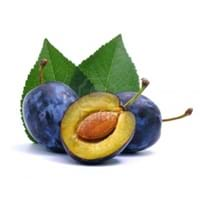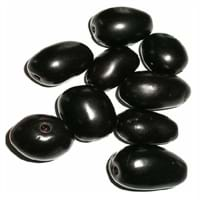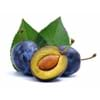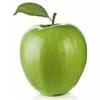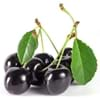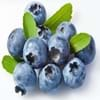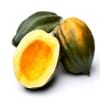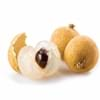Health Benefits
Cancer prevention, Cures gastro-intestinal troubles, Heart care, Increase in haemoglobin, Prevents high blood pressure
Cancer prevention, Heart care, Increase in haemoglobin, Regulates Blood Sugar, Ulcer prevention
General Benefits
Anti-inflammatory properties, Boosts immune system, Digestive aid, Eye care, Flu treatment, Helps in weight loss, Maintains healthy cholesterol level, Treatment of common cold
Boosts immune system, Digestive aid, Fights against infections, Strengthens bones
Skin Benefits
Anti-aging benefits, Brightens and lightens complexion, Reduces wrinkles, Skin revitalization, Treatment of dark spots
Brightens and lightens complexion, Skin cleansing, Skin rejuvenation, Treatment of acne, Treatment of dark spots
Hair Benefits
Prevents hair loss, Promotes longer and healthier hair, Protects hair, Remedy for split ends, Treatment of dandruff
Promotes longer and healthier hair, Protects hair
Allergy Symptoms
Abdominal pains, Anaphylaxis, Vomiting
Abdominal pains, NA
Side Effects
Allergic reaction
Decrease in blood sugar levels, Allergic reaction, Throat irritation, Throat swelling, Possibly unsafe during pregnancy
Best Time to Eat
As a snack in the late afternoon, Don't consume at night and before bed, Don't eat after meal, Morning time (before lunch)
As a snack in the late afternoon, Don't consume at night and before bed, Eat the fresh ones, avoid mixing with any other foods, don't eat after meal., Morning time (before lunch), Strictly avoid empty stomach
Vitamin B5 (Pantothenic Acid)
Not Available
Vitamin B9 (Folic acid)
Not Available
Vitamin C (Ascorbic Acid)
Vitamin E (Tocopherole)
Not Available
Vitamin K (Phyllochinone)
Not Available
Lutein+Zeaxanthin
Not Available
Calories in Fresh Fruit with Peel
Calories in Fresh Fruit without Peel
Not Available
Not Available
Calories in Frozen Form
Not Available
Calories in Dried Form
Not Available
Calories in Canned Form
Not Available
Type
Tree fruit
Tree fruit, Tropical
Season
Summer
Monsoon, Summer
Varieties
Merryweather Damson, Shropshire Prune, President plum, Damson farleigh and Damson langley bullace
Ram Jarnun and Paras
Color
Dark purple
Black, Magenta, Purple
Inside Color
Yellow
Purple
Taste
Juicy, Sweet, Tart
Astringent, Sweet
Origin
Syria
Bangladesh, India, Indonesia, Malaysia, Nepal, Pakistan, Philippines, Sri Lanka
Soil Type
Clay, Loam, Moist, Sandy loam, Well-drained
Loam, Sandy loam, Well-drained
Climatic Conditions
Cold
Humid, Rainfall
Facts about
- The name Damson originates from the original name 'Damacus plum'.
- Damson wine was very popular in 19th century.
- This fruit is often used in jams due to its slightly tart behaviour.
- Wood of jambul tree is water-resistant wood & is used in railroads and to implement engines in the well.
- In Indian mythology, it is said that Jambul fruit was revered by Buddha.
- Jambul has a huge importance in Ayurveda.
Top Producer
United Kingdom
India
Other Countries
Ireland, United States of America
Bangladesh, Indonesia, Malaysia, Nepal, Pakistan, Philippines, Sri Lanka
Top Importer
United States of America
Not Available
Top Exporter
France
India
Botanical Name
Prunus domestica subsp. insititia
Syzygium cumini
Synonym
Not Available
Eugenia cumini
Subkingdom
Tracheobionta
Tracheobionta
Division
Magnoliophyta
Magnoliophyta
Class
Magnoliopsida
Magnoliopsida
Family
Rosaceae
Myrtaceae
Species
Prunus domestica subsp. insititia
S. cumini
Generic Group
Not Available
Not Available
Difference Between Damson and Jambul
We might think that Damson and Jambul are similar with respect to nutritional value and health benefits. But the nutrient content of both fruits is different. Damson and Jambul Facts such as their taste, shape, color, and size are also distinct. The difference between Damson and Jambul is explained here.
The amount of calories in 100 gm of fresh Damson and Jambul with peel is 46.00 kcal and 60.00 kcal and the amount of calories without peel is Not Available and Not Available respectively. Thus, Damson and Jambul belong to Low Calorie Fruits and Low Calorie Fruits category.These fruits might or might not differ with respect to their scientific classification. The order of Damson and Jambul is Rosales and Myrtales respectively. Damson belongs to Rosaceae family and Jambul belongs to Myrtaceae family. Damson belongs to Prunus genus of Prunus domestica subsp. insititia species and Jambul belongs to Syzygium genus of S. cumini species. Beings plants, both fruits belong to Plantae Kingdom.
